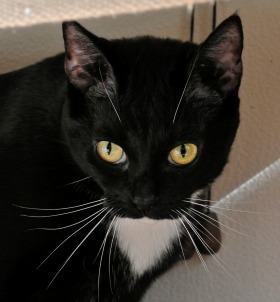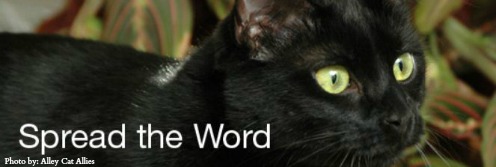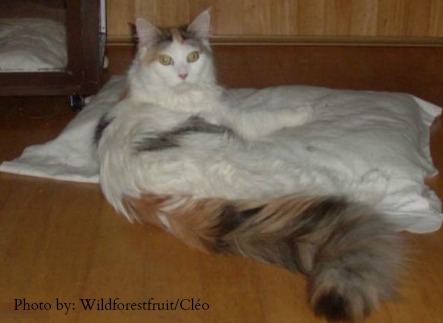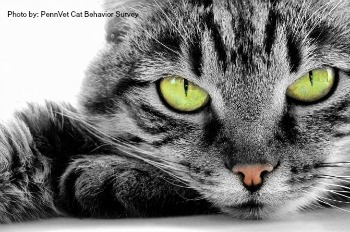| Back to Back Issues Page |
 |
|
Love Cats Digest, Issue #003 -- Cat Lovers & Us February 12, 2013 |
February 12, 2013Love Cats Digest, Issue #003
Greetings cat lovers, it's me, Pita cat! I'm pleased to bring you our Love Cats Digest, third ezine! We sincerely appreciate your support in making this website a great community for cat lovers. We also would like to thank our guest writers for their wonderful contribution! We, at MustLoveCats.net, are very excited about sharing the third issue with you! Enjoy! Issue Summary: (1) Signs of Feline Urinary Blockage
(2) Support a cause
(3) Why Cats Enjoy Eating Grass?
(4) Cattery Of The Month (5) Cat Behavior Survey
(6) Follow Us Signs of Feline Urinary Blockage If your cat strains to urine, but produces no urine, and howls or meows while trying to urinate, licks the genital area, vomits, or seems lethargic, you must contact your Vet right away. These are signs to a urinary blockage, a lethal condition in which the urethra is obstructed by a urinary stone, a blood clot, a tumor, or muscle or nerve problem. The blockage prevents the urine from exiting the cat's body. This condition is more common among male cats because of their urinary system anatomy, however, female cats can also suffer blockages. If left untreated, a urinary blockage can cause death in just a few days as toxins normally excreted in urine accumulate in the cat's blood. Your Vet can determine if your cat has urinary blockage by performing tests, such as: blood test, X-rays, and physical examination. If a urniary blockage is present, your Vet will anesthetize your cat, then remove accumulated urine via a catheter or syringe. The Vet will also give your cat the proper medication, and may also recommend a special diet depending upon what caused the blockage. If the condition persists, surgery may be required. Your cat's prognosis for improved and ongoing health will depend on the blockage's duration, severity, and treatment outcome. Recognizing and treating a blockage as quickly as possible helps to ensure your cat's best health. For more information about feline urinary blockage, click here.Support a Cause There are thousand of cats for adoption in shelters and other rescue organizations every year. Unfortunatelly, only a third of them make it out alive. Rescue organizations do not receive government funding, they rely heavily on the kindness and generosity of animal lovers to help them to do their work. Remember, by supporting a rescue organization they will keep providing shelter, foster, social and medical rehabilitation, feral and stray management, spay/neuter, and community education. Special mention goes to:
Alley Cat Allies. Founded over 20 years ago, this organization is the nation's only advocacy organization dedicated to the protection and humane treatment of cats. Based in Bethesda, Maryland, the mission of Alley Cat allies is to end the killing of cats and lead the movement for their humane care. The organization promotes Trap-Neuter-Return (a program in which outdoor cats are humanely trapped, altered, vaccinated and returned to their outdoor homes) and accessible, affordable neuter services. For more information about Alley Cat Allies, and to join the movement to protect cats, click here.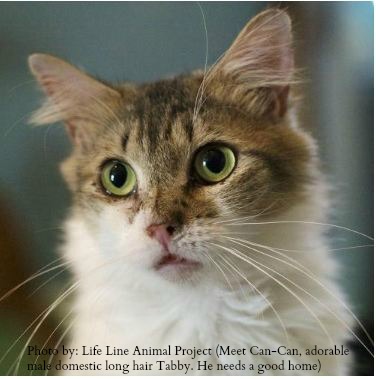
Life Line Animal Project. Their website - www.lifelineanimal.org, is home of the largest online pet adoption network in Atlanta, GA. LifeLine Animal Project works to end the euthanasia of healthy and treatable dogs and cats in animal shelters. Their programs strengthen the entire animal welfare community by promoting homeless pet adoption, providing affordable spay/neuter services, increasing public awareness, and advocating for lifesaving public policy. And, by supporting the work of other rescue organizations and animal control agencies, both locally and nationally, we have established a network of hope that continues to grow. For more information abou Life Line Animal Project and how to contribute to this wonderful organization, click here.Because every cat deserves a good home! Why Cats Enjoy Eating Grass?
Cat grass is a type of grass which is cultivated for cats to eat. Cereal grasses, such as oat, rye, barley, and wheat tend to be especially popular choices for cat grass. They are very easy to grow and safe for cats to consume. There are several cat grass kits available online and at pet stores. It is a good idea to use a wide, low container with a sturdy base, so that your cat cannot knowck the container over while they eat. Be sure to buy specially-labeled cat grass. Some possible explanations for why cats enjoy eating grass, but as yet unproven (except perhaps for the fourth one): 1. Aids in a healthy digestion, and helps move hairballs along. Instead of coughing up the hairball, the hairball is more likely to be passed through your cat's digestive system. 2. Great source of fiber (roughage) in your cat's diet. 3. Contains chlorophyll. Chlorophyll is a natural substance that makes grass green and acts as a natural breath freshener for your cat. 4. Cat Oat Grass and Cat Wheat Grass taste great to your cat.
Cat grass can also help to distract your cat from your house plants, which are usually off-limits. For pet owners who are using cat grass to discourage cats from chewing on the houseplants, we suggest to keep the grass in a location far away from the other plants, and to verbally chastise cats when they attempt to snack on the houseplants, while praising them for investigating the cat grass. Cattery Of The Month
This month's cattery is a small Maine Coon Cattery located in the centre of Holland, called Wild Forestfruit. They are Fifé acknowledged and subscriber of Rasclub Maine Coon. They have a litter once or twice a year, and breeding these cats is Susanne's greatest passion and hobby. For more information about Wildforestfruit, click here.You can also contact Susanne directly via email: forestfruit.cats@gmail.com.
Congratulation Susanne for a Meowonderful work!!! Cat Behavior Survey
The School of Veterinary Medicine at the University of Pennsylvania is in the process of developing a new online survey tool for evaluating the behavior and temperament of domestic cats. The goal is to create a feline equivalent of the Canine Behavioral Assessment and Research Questionnaire to help pet owners, behavior counselors, animal rescue shelters, and cat researchers understand the behavior and behavioral problems of Felis catus. This survey represents the first stage in the development of a standardized and validated questionnaire for use in the behavioral assessment of domestic cats. The survey takes approximately 15-20 minutes to complete. To participate, click here.Many thanks for your participation! Follow Us You can also contact and follow us via: Twitter - @Pita_Cat Facebook - Mustlovecatsnet Pinterest - Pitacatnews Petsumi - PitaCat That's all for this issue, until next time! Meowonderful day everyone! Pita Cat |
| Back to Back Issues Page |
